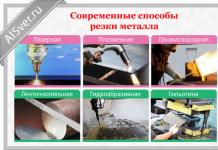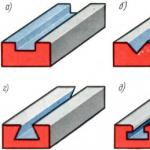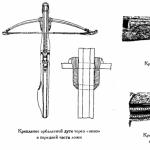The amount of oxygen and nitrogen sharply decreases with height. It's all about the pressure difference between the upper and lower layers of the atmosphere. The upper layers put a lot of pressure on the lower ones, so there is much more air in the latter and its pressure is lower. Climbers, climbing to great heights, experience some difficulties.
It all depends on the height at which the person is located. If it does not exceed 1 km, the difference is almost imperceptible, and there will be no harm to the body. An altitude of 1 to 3 km also cannot harm a healthy person (the body easily compensates for the lack of oxygen). Sick people, especially those who suffer from asthma, should not go on such a dangerous journey.
At an altitude of 5 to 6 km, the body of a healthy person mobilizes all systems and makes them work in an enhanced mode due to a lack of oxygen. A trained person copes with such a height, so various research bases and observatories are often located here. Healthy sleep and proper nutrition help the body of scientists to cope with a stressful situation.
Places located at an altitude of 7 km and above are unsuitable for human life. There is so little oxygen here that the blood cannot fully deliver it to all organs. They begin to experience oxygen starvation. A person feels tired, headache, general condition worsens. At an altitude of 8 km and above, a person can spend no more than 3 days.
Life in the mountains
Mountain dwellers are much healthier and live longer than plain dwellers. What explains this? Oxygen is by nature a strong oxidizing agent. Any oxidizing agent in the body, to a greater or lesser extent, causes its aging. But a person cannot live. To improve health, you need a slightly lower oxygen content in the air than on the plains.
The optimal height for a comfortable life is about 1500 meters above sea level. The body experiences a slight oxygen starvation, which includes all systems in an enhanced mode. Improves blood circulation and ventilation of the lungs, increases the level of hemoglobin in the blood.
American scientists have noticed that people living in the mountains are characterized by guttural sounds in speech. At high altitude, it is much easier to make such sounds, since for this you need to compress the air in the throat. This is easiest to do precisely in the highlands, since the air here is thinner than on the plains.
May 29 marks exactly 66 years since the first ascent of the highest mountain in the world - Everest. After many attempts by different expeditions in 1953, New Zealander Edmund Hillary and Nepalese Sherpa Tenzing Norgay reached the world peak - 8848 meters above sea level.
To date, more than nine thousand people have already conquered Everest, while more than 300 have died during the ascent. Will a person turn around 150 meters before conquering the summit and go down if another climber becomes ill, and is it possible to climb Everest without oxygen - in our material.
Conquer the summit or save someone else's life
There are more and more people wishing to conquer the highest peak of the world every year. They are not afraid of the price of climbing, measured in tens of thousands of dollars (only one climbing permit costs $11,000, as well as the services of a guide, Sherpas, overalls and equipment), nor the risk to health and life. At the same time, many go completely unprepared: they are attracted by the romance of the mountains and the blind desire to conquer the peak, and this is the hardest test of survival. For the spring season 2019, there are already 10 people on Everest. According to media reports, a total of 20 people died in the Himalayas this spring - this is more than in the whole of 2018.
Of course, there is a lot of commerce in extreme tourism now, and climbers with many years of experience also note this. If earlier the queue for climbing Everest had to wait for years, now getting permission for the next season is not a problem. This spring alone, Nepal has sold 381 lifting licenses. Because of this, many hours of queues of tourists formed on the approaches to the top of the mountain, and this is at heights that are critical for life. There are situations when oxygen runs out or there are not enough physical resources of the body to stay in such conditions, and people can no longer walk, someone dies. In cases where one of the members of the group becomes ill, the rest have a question: leave him and continue on his way to achieve the goal for which they have been preparing all their lives, or turn around and go downhill, saving the life of another person?
According to the mountaineer Nikolai Totmyanin, who has made more than 200 ascents (including five ascents of eight-thousanders and 53 ascents of seven-thousanders), it is not customary in Russian groups in mountain expeditions to leave a person who cannot go further. If someone becomes ill and there are big health risks, then the whole group turns around and goes down. This happened more than once in his practice: it happened that he had to deploy the entire expedition 150 meters from the goal (by the way, Nikolai himself climbed to the top of Everest twice without an oxygen tank).
There are situations when it is impossible to save a person. But just leaving him and continuing to move, knowing that he could die or spoil his health - this, according to our concepts, is nonsense, simply unacceptable. Human life is more important than any mountain.
At the same time, Totmyanin notes that it happens differently on Everest, since commercial groups from different countries are gathered there: “Others, for example, the Japanese, do not have such principles. Everyone is there for himself and is aware of the measure of responsibility that he can stay there forever ". Another important point: non-professional climbers do not have a sense of danger, they do not see it. And, being in an extreme situation, when there is little oxygen, the body is limited to any activity, including mental. “In such a situation, people make inadequate decisions, so it’s impossible to entrust a person with a decision about whether to continue moving or not. This should be done by the leader of the group or expedition,” sums up Totmyanin.
oxygen starvation

What happens to a person at such a height? Imagine that you yourself decided to conquer the summit. Due to the fact that we get used to high atmospheric pressure, living in a city almost on a plateau (for Moscow, this is an average of 156 meters above sea level), getting into a mountainous area, our body experiences stress.
This is because the mountain climate is, first of all, low atmospheric pressure and more rarefied air than at sea level. Contrary to popular belief, the amount of oxygen in the air does not change with height, only its partial pressure (voltage) decreases.
That is, when we breathe rarefied air, oxygen is not absorbed as well as at low altitudes. As a result, the amount of oxygen entering the body decreases - a person experiences oxygen starvation.
That is why when we come to the mountains, often instead of the joy of clean air overflowing our lungs, we get headaches, nausea, shortness of breath and severe fatigue even during a short walk.
Oxygen starvation (hypoxia)- the state of oxygen starvation of both the whole organism as a whole and individual organs and tissues, caused by various factors: breath holding, disease states, low oxygen content in the atmosphere.
And the higher and faster we climb, the worse the health consequences can be. At high altitudes, there is a risk of developing altitude sickness.
What are the heights:
- up to 1500 meters - low altitudes (even with hard work there are no physiological changes);
- 1500-2500 meters - intermediate (physiological changes are noticeable, blood oxygen saturation is less than 90 percent (normal), the likelihood of mountain sickness is low);
- 2500-3500 meters - high altitudes (mountain sickness develops with a rapid ascent);
- 3500-5800 meters - very high altitudes (altitude sickness often develops, blood oxygen saturation is less than 90 percent, significant hypoxemia (decrease in oxygen concentration in the blood during exercise);
- over 5800 meters - extreme heights (pronounced hypoxemia at rest, progressive deterioration, despite maximum acclimatization, permanent stay at such heights is impossible).
altitude sickness- a painful condition associated with oxygen starvation due to a decrease in the partial pressure of oxygen in the inhaled air. Occurs high in the mountains, starting at about 2000 meters and above.
Everest without oxygen

The highest peak in the world is the dream of many climbers. Awareness of the unconquered hugeness 8848 meters high has excited minds since the beginning of the last century. However, for the first time people were on its top only in the middle of the twentieth century - on May 29, 1953, the mountain finally submitted to the New Zealander Edmund Hillary and the Nepalese Sherpa Tenzing Norgay.
In the summer of 1980, a man overcame another obstacle - the famous Italian climber Reinhold Messner climbed Everest without auxiliary oxygen in special cylinders, which are used on climbs.
Many professional climbers, as well as doctors, pay attention to the difference in the sensations of the two climbers - Norgay and Messner, when they were at the top.
According to the memoirs of Tenzing Norgay, "the sun was shining, and the sky - in all my life I have not seen the sky blue! I looked down and recognized the places memorable from past expeditions ... On all sides around us were the great Himalayas ... I had never seen such a sight and never I will not see again - wild, beautiful and terrible.
And here are Messner's memories of the same peak. “I’m sinking into the snow, heavy as a stone from fatigue… But they don’t rest here.
What is the reason for such a significant difference in the description of their triumphant ascent of the two climbers? The answer is simple - Reinhold Messner, unlike Norgay and Hillary, did not breathe oxygen.
Inhaling at the top of Everest will bring three times less oxygen to the brain than at sea level. That is why most climbers prefer to conquer peaks using oxygen tanks.

On eight-thousanders (peaks above 8000 meters) there is a so-called death zone - a height at which, due to cold and lack of oxygen, a person cannot stay for a long time.
Many climbers note that doing the simplest things - tying shoes, boiling water or getting dressed - becomes extraordinarily difficult.
Our brain suffers the most during oxygen starvation. It uses 10 times more oxygen than all other parts of the body combined. Above 7500 meters, a person receives so little oxygen that there may be a violation of the blood flow to the brain and its swelling.
Cerebral edema is a pathological process manifested by excessive accumulation of fluid in the cells of the brain or spinal cord and intercellular space, an increase in brain volume.
At an altitude of more than 6000 meters, the brain suffers so much that temporary bouts of insanity can occur. Slow reaction can be replaced by excitement and even inappropriate behavior.
For example, the most experienced American guide and climber Scott Fisher, most likely, having received cerebral edema, at an altitude of more than 7000 meters asked to call him a helicopter for evacuation. Although in a normal state, any, even not very experienced climber, knows perfectly well that helicopters do not fly to such a height. This incident occurred during the infamous climb of Everest in 1996, when eight climbers died during a storm on the descent.
This tragedy was widely known due to the large number of dead climbers. The victims of the ascent on May 11, 1996 were 8 people, including two guides. On that day, several commercial expeditions climbed to the top at the same time. Participants of such expeditions pay money to the guides, who, in turn, provide maximum safety and domestic comfort to their clients on the route.
Most of the participants in the 1996 climb were not professional climbers and were heavily dependent on supplemental oxygen in cylinders. According to various testimonies, 34 people simultaneously went to the summit that day, which significantly delayed the ascent. As a result, the last climber reached the summit after 16:00. The critical time for the ascent is considered to be 13:00, after this time the guides are required to turn the clients back in order to have time to go down while it is light. 20 years ago, neither of the two guides gave such an order in time.
Due to the late rise, many participants did not have oxygen for the descent, during which a strong hurricane hit the mountain. As a result, after midnight, many climbers were still on the side of the mountain. Without oxygen and due to poor visibility, they could not find their way to the camp. Some of them were rescued by professional climber Anatoly Bukreev alone. Eight people died on the mountain due to hypothermia and lack of oxygen.
About mountain air and acclimatization

And yet, our body can adapt to very difficult conditions, including high mountains. In order to be at an altitude of more than 2500-3000 meters without serious consequences, an ordinary person needs from one to four days of acclimatization.
As for altitudes above 5000 meters, it is practically impossible to adapt to them normally, so you can only stay at them for a limited time. The body at such heights is not able to rest and recover.
Can the health risks of being at altitude be reduced and how can this be done? As a rule, all health problems in the mountains begin due to insufficient or improper preparation of the body, namely the lack of acclimatization.
Acclimatization is the sum of adaptive-compensatory reactions of the body, as a result of which a good general condition is maintained, weight is maintained, normal working capacity and psychological state are maintained.
Many doctors and climbers believe that the best way to adjust to altitude is to climb gradually - make several ascents, reaching ever greater heights, and then descend and rest as low as possible.
Imagine a situation: a traveler who decides to conquer Elbrus, the highest peak in Europe, starts his journey from Moscow from 156 meters above sea level. And in four days it turns out to be 5642 meters.
And although adaptation to altitude is genetically inherent in us, such a negligent climber faces several days of heart palpitations, insomnia and headaches. But for a climber who plans to climb at least a week, these problems will be minimized.
While a resident of the mountainous regions of Kabardino-Balkaria will not have them at all. In the blood of highlanders from birth, there are more erythrocytes (red blood cells), and the lung capacity is on average two liters more.
How to protect yourself in the mountains when skiing or hiking
- Gradually gain altitude and avoid sudden elevation changes;
- If you feel unwell, reduce the time of skiing or walking, make more stops for rest, drink warm tea;
- Due to the high ultraviolet radiation, retinal burns can occur. To avoid this in the mountains, you need to use sunglasses and a hat;
- Bananas, chocolate, muesli, cereals and nuts help fight oxygen starvation;
- Alcoholic drinks at altitude should not be consumed - they increase dehydration of the body and exacerbate the lack of oxygen.
Another interesting and, at first glance, obvious fact is that in the mountains a person moves much more slowly than on the plain. In normal life, we walk at a speed of about 5 kilometers per hour. This means that we cover a distance of a kilometer in 12 minutes.
To climb to the top of Elbrus (5642 meters), starting from a height of 3800 meters, a healthy acclimatized person on average will need about 12 hours. That is, the speed will drop to 130 meters per hour compared to normal.
Comparing these figures, it is not difficult to understand how seriously altitude affects our body.
Tenth tourist dies on Everest this spring
Why the higher the colder
Even those who have never been in the mountains know one more feature of the mountain air - the higher, the colder. Why is this happening, because closer to the sun, the air, on the contrary, should warm up more.
The thing is that we feel heat not from the air, it heats up very badly, but from the surface of the earth. That is, a ray of the sun comes from above, through the air and does not heat it.
And the earth or water receives this beam, heats up quickly enough and gives off heat upwards, to the air. Therefore, the higher we are from the plain, the less heat we receive from the earth.
Inna Lobanova, Natalia Loskutnikova
First of all, it is worth mentioning that we will talk about the meaning of the word "sparse", and not "discharged". "Discharged" means "to be devoid of charge."
A revolver can be discharged, but the air can be rarefied.
What is rarefied air
The word "sparse" comes from the adjective "rare". That is, with reduced density. This is the state of air when the number of molecules per cubic centimeter of space becomes less than in the air that everyone is used to breathing.
In nature, it is found at altitude. For example, in the mountains or in the layers of the atmosphere, which can be reached by plane. The higher you rise above ocean level, the thinner the air will become. As a result, it will turn into a vacuum, that is, the complete absence of air molecules in space.
The decrease in density with climb occurs because the farther from the earth, the less the force of gravity of the earth acts on oxygen particles. It turns out that the maximum density of air is near the surface, especially where many plants grow, and in open space there is no air at all, there is a complete vacuum. And also thin the air can be artificially.
On airplanes
A passenger plane rises above the earth's surface by about 10-12 km. Flying vehicles with rocket and turbojet engines rise up to 100 km, but the townsfolk cannot get on them, only people specially trained for this fly on them. At such a height, the vital activity of the human body is impossible. If a door is opened in an aircraft in flight or an emergency depressurization of the cabin occurs, then all passengers in the aircraft will instantly die.

But even in a hermetically sealed cabin, people will experience uncomfortable sensations:
- high blood pressure;
- pawns ears;
- swollen legs.
Frequent flights by plane are by no means good for health. Pressure drops, high levels of carbon monoxide, too much acceleration - all this affects the cardiovascular system. Pregnant women and patients with hypertension are generally not recommended to move in this way.
In the mountains
The highest point on earth is the summit of Mount Everest. The maximum point of this mountain reaches more than 8 thousand meters, and this is very high.
Instinctively, a person is afraid of heights and seeks to descend lower. This happens not only because you can fall from a high place, but also because height can have a detrimental and even fatal effect on human health.

It is impossible to fully get used to the properties of rarefied air, but you can adapt. Climbers who climb high in the mountains have been preparing for this for years. And they also know that you need to rise gradually, gaining a certain height - you need to get used to it. If an unprepared person rises sharply to Everest or even a mountain much lower, then mountain sickness will surely knock him down. For a healthy strong person, the critical height is from 2.5 km and above, and for a sick or elderly person - from 1 km and above. The symptoms of this disease are as follows:
- headache and dizziness;
- dyspnea;
- vomit;
- a sharp decline in strength, and then a sudden surge of strength;
- inadequate perception of reality.
If a person has a feeling that he suddenly became happy, then this is a very bad sign. It will be followed by drowsiness, and if you fall asleep, you will not wake up.
The worst thing is that altitude sickness can be almost asymptomatic for a long time, and then the person suddenly loses consciousness. If you do nothing and immediately go down, then the person will die. The most detrimental of all is hypoxia or lack of oxygen for the central nervous system.
rarefied air treatment
But there is an opinion that mountain air is very useful. And this opinion is true, moreover, there is even orotherapy - treatment and recovery with rarefied air.
The principle of therapy is to place a person in a capsule with rarefied air in a certain concentration.

Orotherapy is effective in the following cases:
- allergic reactions of the body;
- diseases of the central nervous system;
- prevention of pathology of pregnancy;
- anemia;
- the need to stimulate regeneration.
The technique has been used in Russia since 1987. Such treatment should be carried out exclusively in a clinical setting and under the supervision of a physician. After all, both electric current and radioactive radiation in the wrong doses kill, but in exactly calculated doses they treat. The mountain air generator allows you to thin the air in clinical conditions.
What is rarefied air? Explain to me like a fool what rarefied air is ...
- So the guys want to reassure everyone ... First of all, the molecules are not getting smaller! they simply move away from each other… It follows that the concentration of gases does not change, the volume of the gas mixture system changes! And this happens due to a decrease in pressure ... The gas mixture is like a spring, the more you squeeze it, the less volume it will eventually occupy ... The lower the potential pressure, the greater the volume! With the same concentration but a larger volume, our body must ventilate more air, but since the volume of the lungs has its maximum, and is unable to take in more, we experience malaise (hypoxia)
- Now, if air is imagined as water, then in a liter jar there will be less than a liter and nothing else will be ... drops of water seem to recede from each other.
So it is with air - You climb a high mountain and oops! And there is nothing to breathe))
In general, this is low atmospheric pressure, observed at high altitudes. -
Hence the meaning of the word "rarefied" - air. in which molecules are located less often. Because there are just fewer of them.I saw. How do you pump up a ball? Air is pumped into it, there are more air molecules there, and since they always move randomly, they now more often hit the walls of the ball from the inside and put pressure on it. Therefore, the inflated ball is so elastic.
Now imagine that the pump works in the opposite direction - it pumps out air. Of course, the ball will simply flatten - that's all. But if instead of a ball we have a rigid vessel - glass, metal, then it retains its shape and dimensions. But the air (and molecules) when pumping out in it becomes really less. This is what is called rarefied air.So rarefied air is obtained artificially. But it also happens in nature. Namely:
the higher you climb from sea level into the mountains, the thinner the air becomes. Therefore, it is difficult to breathe high in the mountains, climbers even put on oxygen masks. And even higher, where planes fly, the air is even more rarefied. And if the sealing of the aircraft is broken, the passengers will die very quickly. You ask: why do planes climb so high if it's dangerous? Hard economic interests are forcing this: rarefied air is much less dense than below, and therefore offers less resistance. This means that the aircraft can fly at a higher speed, the flight time is reduced, and fuel is saved.PS Isn't it time to take a break from physics? . Look at my page (in My world), look through photo albums ...
- Anatoly Shodoev Enlightened (48195) 5 years ago
First of all, I'm not going to explain like a fool. I will explain as a normal student who did not understand the topic a little.
Secondly, well done. that you spell the word sparse correctly. So many people write discharge, maybe they even think that this word comes from the word "discharge".
In fact. of course, the word "rarely" is at the heart of it.
======================================================
And how to understand then how to defuse the AK 47 assault rifle? If this word is based on "rarely"? - There is such a thing as pressure. imagine that there is a certain amount of air in the piston, we pull the piston, and now the previous volume has doubled, and there is as much air left as it was before. this will be rarefied air, as opposed to, for example, the pressure of excess air in the tires of a car. And don't call yourself a fool, that's bad
- “But how to understand then how to defuse the AK 47 assault rifle? If this word is based on “rarely”?
Sparse comes from the word rarely.
And discharge comes from the word discharge.
Mountains attract people with their beauty and grandeur. Ancient, like eternity itself, beautiful, mysterious, bewitching the mind and heart, they do not leave anyone indifferent. Breathtaking views of mountain peaks covered with never-melting snow, slopes covered with forests, alpine meadows are pulling back everyone who has spent a vacation in the mountains at least once.
It has long been observed that people in the mountains live longer than in the plains. Many of them, living to a ripe old age, retain good spirits and clarity of mind. They get sick less and recover faster after illnesses. Women of the middle mountains retain the ability to bear children much longer than women of the plains.
Breathtaking views of the mountains are complemented by the purest air, which is so pleasant to breathe in deeply. Mountain air clean and filled with aromas of healing herbs and flowers. It does not contain dust, industrial soot and exhaust gases. They breathe easily and it seems that you can not breathe in any way.
Mountains attract a person not only with their beauty and grandeur, but also with a steady improvement in well-being, a noticeable increase in efficiency, a surge of strength and energy. In the mountains, the air pressure is less than in the plains. At an altitude of 4 kilometers, the pressure is 460 mmHg, and at an altitude of 6 km - 350 mmHg. With an increase in altitude, the air density decreases, and the amount of oxygen in the inhaled volume decreases accordingly, but paradoxically, this has a positive effect on human health.
Oxygen oxidizes our body, contributes to aging and the occurrence of a host of diseases. At the same time, without it, life is impossible. Therefore, if we want to significantly extend life, we need to achieve a reduction in the flow of oxygen into the body, but not too little and not too much. In the first case, there will be no therapeutic effect, and in the second case, you can harm yourself. Such a golden mean is the mountain air of the middle mountains: 1200 - 1500 meters above sea level, where the oxygen content is approximately 10%.
At present, it has already been clearly established that there is only one factor that prolongs a person's life in the mountains - this is mountain air, the oxygen content of which is lowered and this has an extremely beneficial effect on the body.
The lack of oxygen causes a restructuring in the work of various body systems (cardiovascular, respiratory, nervous), causes reserve forces to turn on. This, as it turned out, is a very effective, inexpensive, and most importantly affordable way for everyone to restore and improve health. When the amount of oxygen in the inhaled air decreases, a signal about this is transmitted through special receptors to the respiratory center of the medulla oblongata, and from there it goes to the muscles. The work of the chest and lungs intensifies, the person begins to breathe more often, respectively, the ventilation of the lungs and the delivery of oxygen to the blood improve. There is an increase in heart rate, which increases blood circulation, and oxygen reaches the tissues faster. This is facilitated by the release of new erythrocytes into the blood, and, consequently, the hemoglobin contained in them.
This explains the beneficial effect of mountain air on a person's vitality. Coming to the mountain resorts, many notice that their mood improves, their vitality is activated.
But if you climb higher into the mountains, where the mountain air contains even less oxygen, the body will react to its lack in a completely different way. Hypoxia (lack of oxygen) will already be dangerous, and the nervous system will suffer first of all, and if oxygen is not enough to maintain the brain, a person may lose consciousness.
In the mountains, solar radiation is much stronger. This is due to the high transparency of air, since its density, the content of dust and water vapor in it decreases with height. Solar radiation kills many harmful airborne microorganisms and decomposes organic matter. But most importantly, solar radiation ionizes the mountain air, contributing to the formation of ions, including negative oxygen and ozone ions.
For the normal functioning of our body in the air we breathe, both negatively and positively charged ions must be present, and in a strictly defined ratio. Violation of this balance in any direction has a very adverse effect on our well-being and health. At the same time, negatively charged ions, according to modern scientific data, are necessary for a person as well as vitamins in food.
In rural air, the concentration of ions of both charges on a sunny day reaches 800-1000 per 1 cubic cm. In some mountain resorts, their concentration rises to several thousand. Therefore, the mountain air has a healing effect on most living beings. Many of the centenarians of Russia live in the mountains. Another effect of rarefied air is an increase in the body's resistance to the damaging effects of radiation. However, at high altitudes, the proportion of ultraviolet radiation sharply increases. The impact of ultraviolet rays on the human body is very high. Possible skin burns. They damage the retina of the eye, causing severe pain and sometimes temporary blindness. To protect the eyes, it is necessary to use goggles with light-protective glasses, and to protect the face, wear a hat with wide brim.
Recently, such methods as orotherapy (treatment with mountain air) or normobaric hypoxic therapy (treatment with rarefied air with a low oxygen content) have become widespread in medicine. It is well established that with the help of mountain air it is possible to prevent and treat the following diseases: occupational diseases associated with lesions of the upper respiratory tract, various forms of allergic and immunodeficiency conditions, bronchial asthma, a wide group of diseases of the nervous system, diseases of the musculoskeletal system, diseases cardiovascular system, diseases of the gastrointestinal tract, skin diseases. Hypoxic therapy excludes side effects as a drug-free method of treatment.


















